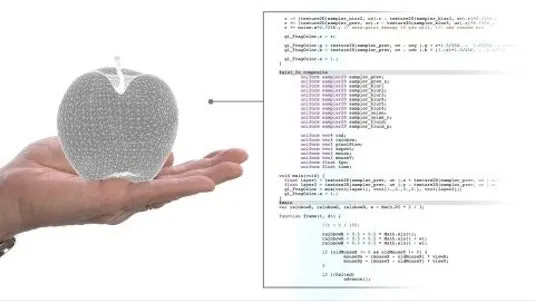
Building a Selective Laser Sintering (SLS) 3D Printer! 
This course provides an overview of how to build a Selective Laser Sintering (SLS) 3D Printer. It covers the unboxing of the Sintratec Kit, the assembly of the door, enclosure, core, powder spreader, stages, heating element, limit switches, lamps, optics, hat, and electronics. It also explains how to wire the mains and complete the printer. ▼
ADVERTISEMENT
Course Feature
![]() Cost:
Cost:
Free
![]() Provider:
Provider:
Youtube
![]() Certificate:
Certificate:
Paid Certification
![]() Language:
Language:
English
![]() Start Date:
Start Date:
On-Demand
Course Overview
❗The content presented here is sourced directly from Youtube platform. For comprehensive course details, including enrollment information, simply click on the 'Go to class' link on our website.
Updated in [February 21st, 2023]
This course provides learners with the opportunity to build a Selective Laser Sintering (SLS) 3D Printer from scratch. Learners will be guided through the entire process, from unboxing the Sintratec Kit to post-processing the 3D prints. They will learn how to assemble the components, including the door, enclosure, core, powder spreader, stages, heating element, limit switches, lamps, optics, hat, and electronics. They will also learn how to wire the mains, calibrate the printer, and nest parts for printing. Finally, they will learn how to recycle the powder and compare SLS to FFF 3D printing. By the end of the course, learners will have a comprehensive understanding of the construction and design of 3D printers, as well as the advantages and disadvantages of SLS 3D printing.
[Applications]
After completing this course, participants can apply their knowledge of building a Selective Laser Sintering (SLS) 3D Printer to create their own 3D printer. They can use the information learned in the course to assemble the components, calibrate the printer, and print functional parts. Additionally, they can use the knowledge gained to compare SLS to FFF 3D printing and understand the pros and cons of each.
[Career Paths]
1. 3D Printing Technician: 3D printing technicians are responsible for the maintenance and operation of 3D printing machines. They must be knowledgeable in the use of 3D printing software and hardware, and be able to troubleshoot any issues that arise. The development of 3D printing technology is rapidly advancing, so 3D printing technicians must stay up to date with the latest trends and advancements in the field.
2. 3D Printing Engineer: 3D printing engineers are responsible for designing and developing 3D printing systems. They must be knowledgeable in the use of 3D printing software and hardware, and be able to design and develop 3D printing systems that meet customer requirements. 3D printing engineers must also be able to troubleshoot any issues that arise with 3D printing systems.
3. 3D Printing Designer: 3D printing designers are responsible for creating 3D models for 3D printing. They must be knowledgeable in the use of 3D printing software and hardware, and be able to create 3D models that meet customer requirements. 3D printing designers must also be able to troubleshoot any issues that arise with 3D printing models.
4. 3D Printing Consultant: 3D printing consultants are responsible for providing advice and guidance to clients on the use of 3D printing technology. They must be knowledgeable in the use of 3D printing software and hardware, and be able to provide advice and guidance on the best 3D printing solutions for clients. 3D printing consultants must also be able to troubleshoot any issues that arise with 3D printing systems.
[Education Paths]
1. Mechanical Engineering: Mechanical engineering is a field of engineering that focuses on the design, development, and production of mechanical systems. It is one of the oldest and broadest engineering disciplines, and it is a rapidly growing field due to the increasing demand for advanced technologies. Mechanical engineers are responsible for the design, development, and production of a wide range of products, from medical devices to automobiles. Mechanical engineering is a great choice for those interested in developing and producing new technologies.
2. Computer Science: Computer science is a field of study that focuses on the design, development, and implementation of computer systems and software. It is a rapidly growing field due to the increasing demand for advanced technologies. Computer scientists are responsible for the design, development, and implementation of a wide range of computer systems and software, from operating systems to artificial intelligence. Computer science is a great choice for those interested in developing and producing new technologies.
3. Electrical Engineering: Electrical engineering is a field of engineering that focuses on the design, development, and production of electrical systems. It is a rapidly growing field due to the increasing demand for advanced technologies. Electrical engineers are responsible for the design, development, and production of a wide range of electrical systems, from power grids to consumer electronics. Electrical engineering is a great choice for those interested in developing and producing new technologies.
4. Robotics: Robotics is a field of engineering that focuses on the design, development, and production of robotic systems. It is a rapidly growing field due to the increasing demand for advanced technologies. Robotics engineers are responsible for the design, development, and production of a wide range of robotic systems, from autonomous vehicles to medical robots. Robotics is a great choice for those interested in developing and producing new technologies.
Course Provider

Provider Youtube's Stats at AZClass
Discussion and Reviews
0.0 (Based on 0 reviews)
Explore Similar Online Courses

Guided Project: Build your first Nodejs app

AI Typing Tutor using Opencv Python Computer Vision

Python for Informatics: Exploring Information

Social Network Analysis

Introduction to Systematic Review and Meta-Analysis

The Analytics Edge

DCO042 - Python For Informatics

Causal Diagrams: Draw Your Assumptions Before Your Conclusions

Whole genome sequencing of bacterial genomes - tools and applications

Interactive 3D Graphics

Bioprinting: 3D Printing Body Parts


Start your review of Building a Selective Laser Sintering (SLS) 3D Printer!